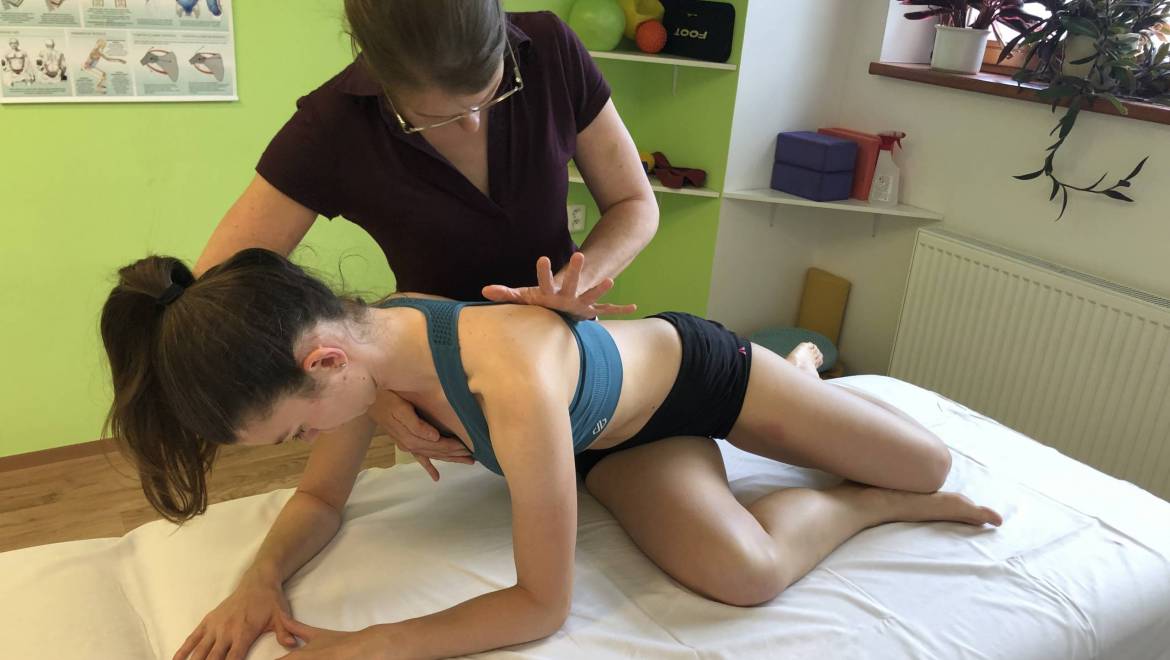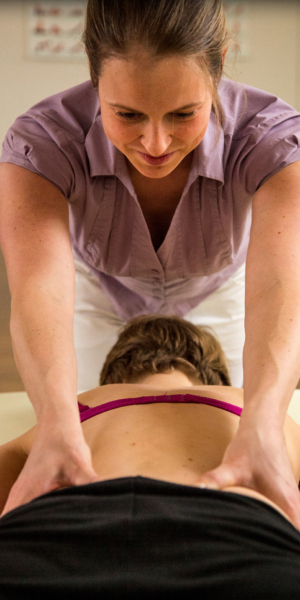We successfully treat disc herniations. How is a herniated disc recognized?
What is the so-called hotplate and how is it damaged?
The intervertebral disc, less often called the plate, is an elastic cartilaginous tissue lining the space between the individual vertebrae and (not only) thanks to it our spine is flexible, flexible and mobile. Pathological changes in the disc can then have several stages: starting with symmetrical bulging of the disc, then its bulging through the circumference of the vertebra to the most serious stage of prolapse of the disc itself, when its mass causes oppression in the area of the spinal cord or nerves from the spinal cord withdrawing.
Symptoms of intervertebral disc herniation
A person with a herniated disc usually feels intense pain in the back, which can only later (sometimes within days or weeks) turn into pain propagating to one or both limbs. Gradually, muscle weakening and disorders and changes in sensitivity in specific areas also develop – all depending on which of the nerves is oppressed by the prolapse. The onset of pain is sudden, most often when lifting an object and rotational movements.
Pain is often further provoked by turning on the abdominal press (i.e. sneezing, coughing, laughing or pressure on the stool), as well as sitting or standing for a long time. On the contrary, relief can be when walking or lying down. With the developed state, however, there is no longer any position of relief and pain can not even sleep and turn in bed.A specific example may be the most frequently occurring disc herniation at the level of the vertebral L5/S1, when the root of the S1 nerve is oppressed – the patient has pain in the back, which further radiates along the back of the buttocks, the back of the thigh and calf to the outer edge of the sole of the foot and little finger. In the described area, there is a decrease in sensitivity or its alteration in the form of tingling, tingling.Gradually, a weakening of mobility develops, when the patient is not able to stand on his toes, in more severe stages he is not able to put his foot in the hip joint.
Diagnosis of prolapse
The doctor makes a diagnosis of intervertebral disc herniation on the basis of taking an anamnesis (by interviewing the patient, he determines the circumstances of the onset of difficulties, their development and current condition, etc.). Furthermore, clinical examination (it is necessary to evaluate the functionality of the spine and other segments of the body, including hip joints, to find out their limitations and problems), neurological examination (specific tests to verify the oppression of the nerve, examine nerve reflexes, etc.) and last but not least, the use of imaging methods (X-ray, magnetic resonance imaging, CT scan). It is important to distinguish disc herniation (when the nerve root is actually compressed, the so-called radiculopathy) from the state when it is acute back pain imperfectly imitating the state of prolapse called pseudoradicular syndrome.In pseudoradicular syndrome, when, for example, pain never exceeds the level of the knee, there are no signs of compression of the nerve (sensitivity is not violated, nerve reflexes are not affected, specific tests to verify nerve oppression are negative). This condition is caused by a functional disorder of the lumbar spine or hip joints, or both.
Disc herniation has many of us…
Finally, on the topic of disc herniation, an interesting fact: prolapse can be demonstrated in about 20-30% of performed examinations (CT/MRI) in healthy individuals – prolapses are so-called neurolgically asymptomatic, people have no difficulties. However, it is important to remember that this condition is accompanied by reactive changes in both muscles and soft tissues. These are changes in function, these functional changes will then lead to the development of difficulties in the long term.


